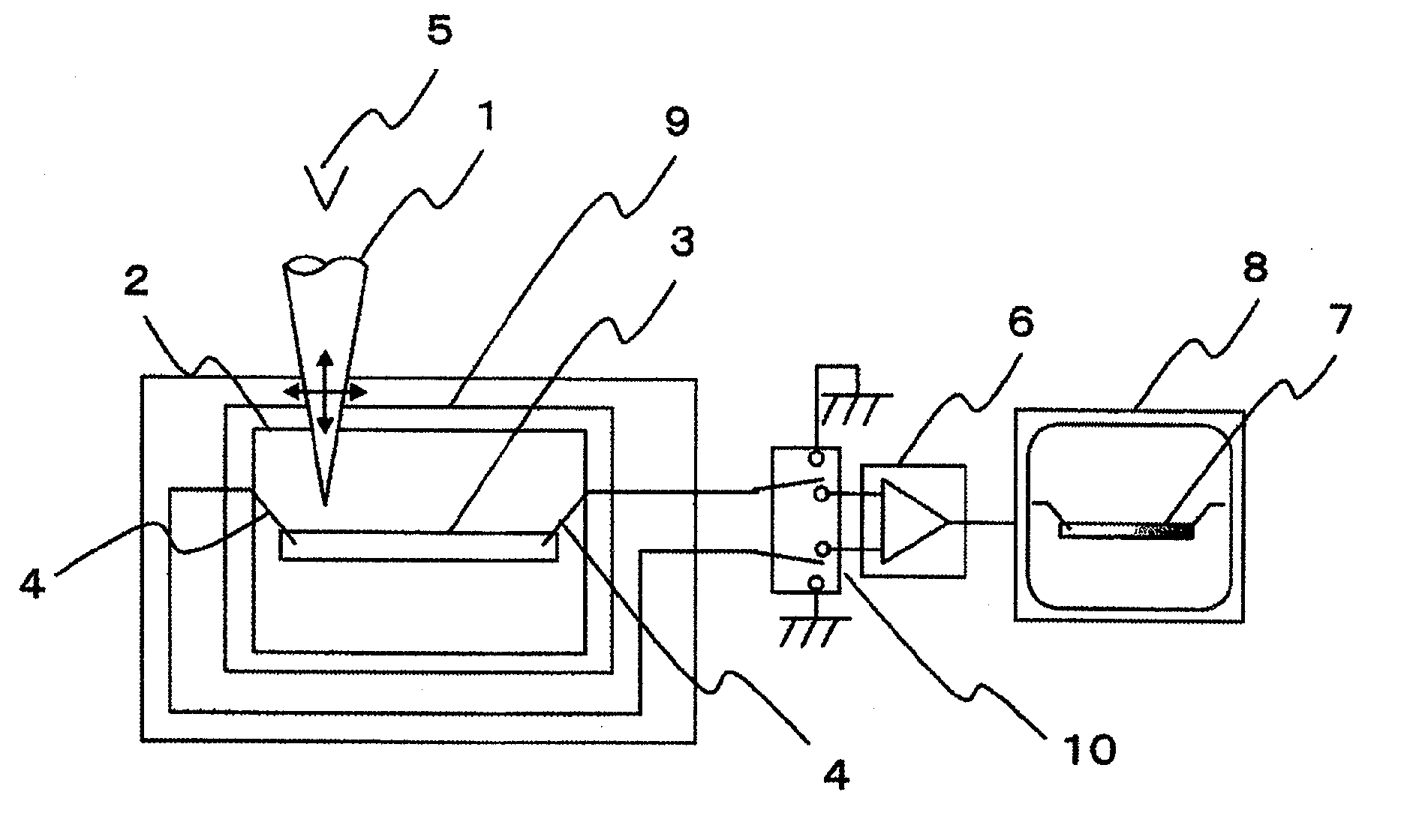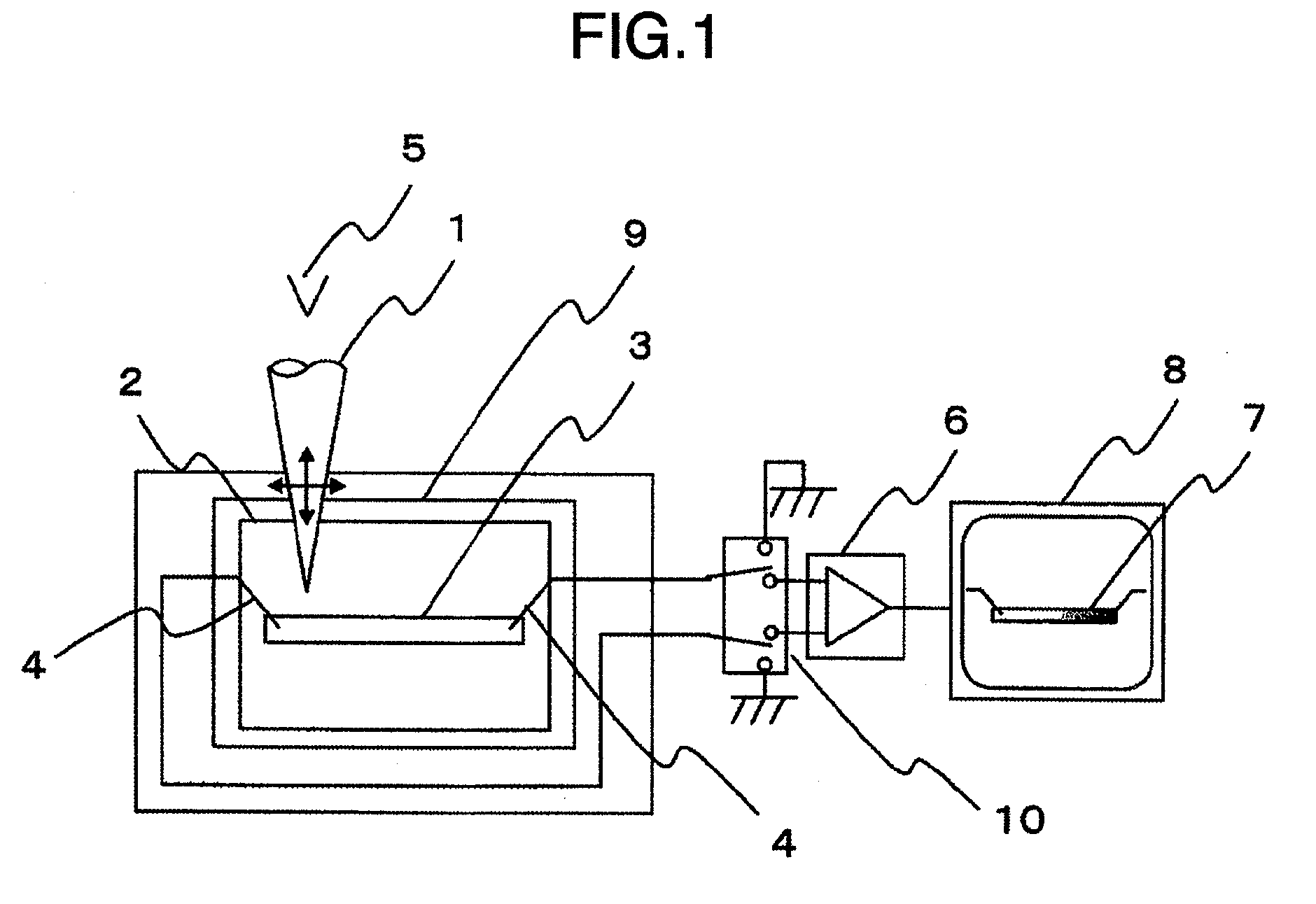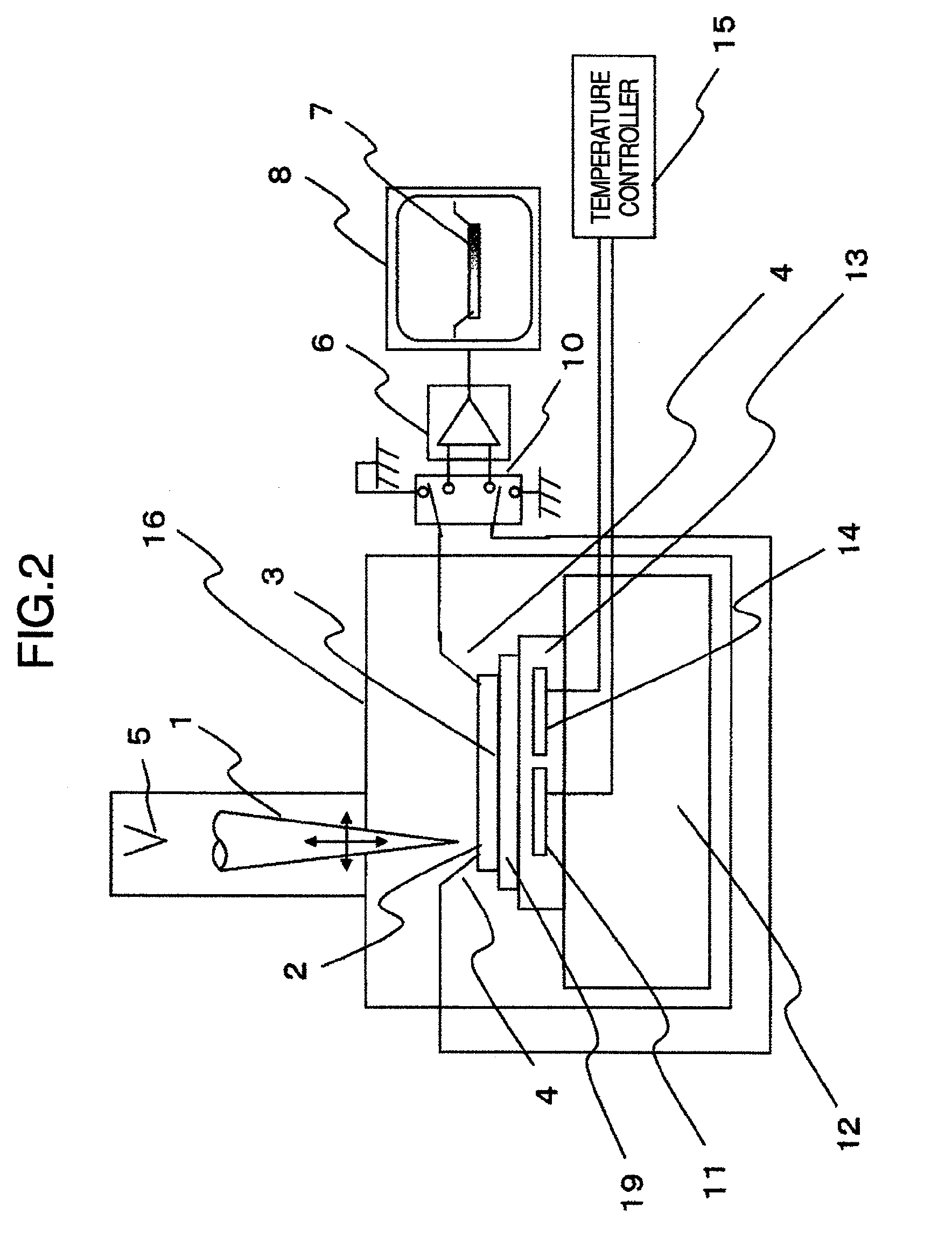Sample inspection apparatus
a technology of sample inspection and sample, which is applied in the direction of material analysis using wave/particle radiation, instruments, nuclear engineering, etc., can solve the problems of difficult identification of faulty points, difficult to find such changes, and hardly appear the brightness between faulty points and normal points, so as to reduce the potential difference between samples and probes, reduce the acceleration voltage, and prevent damage
- Summary
- Abstract
- Description
- Claims
- Application Information
AI Technical Summary
Benefits of technology
Problems solved by technology
Method used
Image
Examples
first embodiment
[0036]FIG. 1 is a schematic configuration diagram of a sample inspection apparatus to which an embodiment of the present invention is applied.
[0037]A sample 2 is irradiated with a primary electron beam 1. There is a wiring pattern 3 in the surface of the sample 2. Probes 4 are brought into contact with one side or opposite ends of the wiring pattern 3 or a pad thereof. In this state, the surface of the sample 2 including the wiring pattern 3 is scanned with the primary electron beam 1 by an electron beam source 5.
[0038]Of the radiated primary electron beam 1, electrons flowing into the wiring pattern 3 are detected as a current by the probes 4. The detected current is inputted to an amplifier 6 so as to be amplified by the amplifier 6. The amplifier 6 generates and outputs a signal in accordance with the inputted signal. The outputted signal is synchronized with the scan with the primary electron beam 1 and displayed on a display portion 8 as an absorbed electron current image 7.
[00...
second embodiment
[0042]FIGS. 3A and 3B show expressions of weighted addition and subtraction of two absorbed electron current images. Two absorbed electron current images are added / subtracted with weighting constants w and g. The two images may be images obtained with the temperature being changed. Alternatively, the two images may be absorbed electron current images obtained with the electro-optical conditions being changed, or absorbed electron current images obtained with the contact positions of the probes being changed.
[0043]FIGS. 4A and 4B show expressions in the case where the number of images in weighted addition and subtraction is increased to three or more while it is 2 in FIGS. 3A and 3B. FIGS. 4A and 4B show examples of images obtained in different temperatures when K=2.
third embodiment
[0044]FIG. 5 shows an explanatory example of a simple difference between two images obtained in different sample temperatures. Based on the obtained differential image, only a portion whose contrast has changed in accordance with the temperature change is emphasized.
[0045]Here, weighting coefficients may be determined so that pixel values in one and the same position in an image at a sample temperature A° C. and an image at a sample temperature B° C. can be equalized to each other.
[0046]Even if the position corresponds to a faulty position, pixel values in the other site than the faulty position will remain in an image obtained by weighted difference. Consequently, the faulty position will be emphasized.
[0047]FIG. 6 shows an example where in order to identify a short-circuit point in parallel wires, probes are brought into contact therewith at a plurality of points so as to obtain a plurality of absorbed electron current images concurrently, and weighted subtraction is performed on ...
PUM
 Login to View More
Login to View More Abstract
Description
Claims
Application Information
 Login to View More
Login to View More - R&D
- Intellectual Property
- Life Sciences
- Materials
- Tech Scout
- Unparalleled Data Quality
- Higher Quality Content
- 60% Fewer Hallucinations
Browse by: Latest US Patents, China's latest patents, Technical Efficacy Thesaurus, Application Domain, Technology Topic, Popular Technical Reports.
© 2025 PatSnap. All rights reserved.Legal|Privacy policy|Modern Slavery Act Transparency Statement|Sitemap|About US| Contact US: help@patsnap.com



